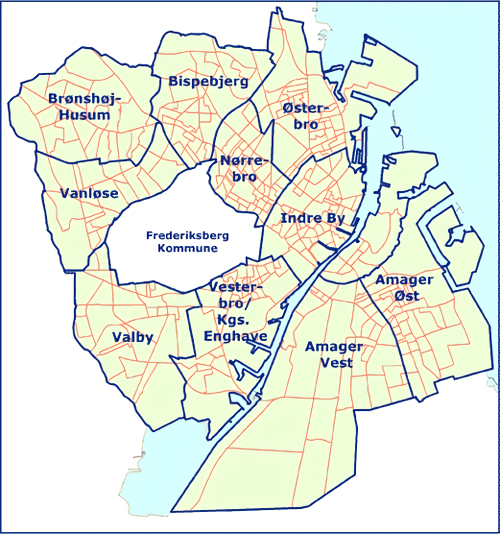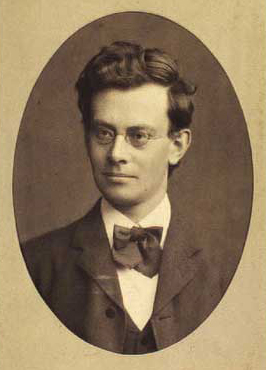|
Ferdinand Meldahl
Ferdinand Meldahl (16 March 1827 – 3 February 1908) was a Danish architect best known for the reconstruction of Frederiksborg Castle after the fire in 1859. Meldahl was one of the leading proponents of historicism in Denmark. Biography He was the son of architect Heinrich Meldahl. He worked in his father's iron foundry and was also trained as a bricklayer. He joined the Royal Danish Academy of Fine Arts, where he was educated as an architect. He conducted several study trips to Germany, France, Spain, the Netherlands, England, Egypt and Syria. As a member of the municipal council of Copenhagen Municipality for 27 years from 1866, Meldahl managed to significantly influence the city. In 1857, he became a member of the Royal Danish Academy of Fine Arts and in 1863 a professor at the academy. He was its manager from 1873 to 1890. In 1904, he was appointed a Knight Grand Cross of the Royal Victorian Order on the occasion of the visit of King Edward VII of the United Kingdom. At ... [...More Info...] [...Related Items...] OR: [Wikipedia] [Google] [Baidu] |
Peder Severin Krøyer
Peder Severin Krøyer (; 23 July 1851 – 21 November 1909), also known as P. S. Krøyer, was a Danish painter. Life Growing up and early training Krøyer was born in Stavanger, Norway, on 23 July 1851 to Ellen Cecilie Gjesdal. He was raised by Gjesdal's sister, Bertha Cecilie (born 1817) and brother-in-law, the Danish zoologist Henrik Nikolai Krøyer, after his mother was judged unfit to care for him. Krøyer moved to Copenhagen to live with his foster parents soon afterward. Having begun his art education at the age of nine under private tutelage, he was enrolled in Copenhagen's Technical Institute the following year. In 1870 at the age of 19 Krøyer completed his studies at the Royal Danish Academy of Art ('), where he had studied with Frederik Vermehren. In 1873 he was awarded the gold medal, as well as a scholarship. Early career His official debut as a painter was in 1871 at Charlottenborg Palace, Charlottenborg with a portrait of a friend, the painter Frans Schw ... [...More Info...] [...Related Items...] OR: [Wikipedia] [Google] [Baidu] |
Copenhagen Municipality
Copenhagen Municipality ( da, Københavns Kommune), also known in English as the Municipality of Copenhagen, located in the Capital Region of Denmark, is the largest of the four municipalities that constitute the City of Copenhagen (), the other three being Dragør, Frederiksberg, and Tårnby. The Municipality of Copenhagen constitutes the historical city centre and the majority of its landmarks. It is the most populous in the country with a population of 652,564 inhabitants (), and covers in area,. Copenhagen Municipality is located at the Zealand and Amager islands and totally surrounds Frederiksberg Municipality on all sides. The strait of Øresund lies to the east. The city of Copenhagen has grown far beyond the municipal boundaries from 1901, when Frederiksberg Municipality was made an enclave within Copenhagen Municipality. Frederiksberg has the largest population density of the municipalities of Denmark. The municipal seat of government is the Copenhagen City Hall ( ... [...More Info...] [...Related Items...] OR: [Wikipedia] [Google] [Baidu] |
Otto Bache
Otto Bache (21 August 1839 – 28 June 1927) was a Danish Realist painter. Many of his works depict key events in Danish history. Biography At age eleven he received a dispensation and was admitted into the Royal Danish Academy of Fine Arts, studying under Wilhelm Marstrand, among others. In 1866, he received the Academy's travel grant and went to Paris and later to Italy. His stay in Paris had a particularly deep impact on his work, turning it in a direction characterized by more freedom, more colour, stronger light, and broader scope. Upon his return in 1868, he was married. He was named a Commander in the Order of the Dannebrog and later was awarded the Dannebrogordenens Hæderstegn. He received early recognition as a portrait painter but he also showed great interest in painting animal motifs, gradually also turning to genre works and history painting History painting is a genre in painting defined by its subject matter rather than any artistic style or specific per ... [...More Info...] [...Related Items...] OR: [Wikipedia] [Google] [Baidu] |
Wilhelm Marstrand
Nicolai Wilhelm Marstrand (24 December 1810 – 25 March 1873), painter and illustrator, was born in Copenhagen, Denmark, to Nicolai Jacob Marstrand, instrument maker and inventor, and Petra Othilia Smith. Marstrand is one of the most renowned artists belonging to the Golden Age of Danish Painting. Early development and academy training Marstrand studied at Copenhagen's Metropolitan School (''Metropolitanskolen''), but had little interest in books, and left around 16 years of age. Christoffer Wilhelm Eckersberg, painter and professor at the Royal Danish Academy of Art (''Det Kongelige Danske Kunstakademi'') in Copenhagen, was a close friend of Wilhelm's father, and it was to all appearance Eckersberg who recommended an artistic career for young Wilhelm. Wilhelm had already shown artistic talent, tackling difficult subjects such as group scenes with many figures and complicated composition. At 16 years of age Marstrand thus began his studies at the Academy under Eckersberg, at ... [...More Info...] [...Related Items...] OR: [Wikipedia] [Google] [Baidu] |
Carl Frederik Bricka
Carl Frederik Bricka (10 July 1845 – 23 August 1903) was a Denmark, Danish archivist, historian and biographer. Biography Carl Bricka was born in Copenhagen, Denmark. His father, Frederik Vilhelm Theodor Bricka (1809-79), was a medical doctor. He attended Metropolitanskolen and earned his Magister degree from the University of Copenhagen (1870). He became an assistant at the Danish Royal Library in 1871. During the period 1883-97, he was employed in the Danish National Archives, after which he became the department head (''Rigsarkivar''). Bricka became a member of the board of the Danish Historical Society and edited the historical magazine published by the association (1878-97). He also served as editor of ''Danske Magazin'' (1883-1901). From 1885 until his death in 1903, he was the publisher of the ''Dansk biografisk lexikon: tillige omfattende Norge for Tidsrummet 1537–1814''. The first edition of this Danish biographic encyclopedia was published by Gyldendal ... [...More Info...] [...Related Items...] OR: [Wikipedia] [Google] [Baidu] |
Ingeniøren
''Ingeniøren'' (full name: ''Nyhedsmagasinet Ingeniøren'', literally ''The News Magazine "The Engineer"'') is a Danish weekly newspaper specialising in engineering topics. History and profile The paper has covered science and technology issues as well as political topics and debate related to engineering since 1892, and maintains an online archive of these. The online version began 2 December 1994, as the first Danish internet media.Behrendt, Maria.Ing.dk kom først – lige fra den spæde start ''Ingeniøren'', 24 December 2014. Retrieved 24 December 2014. Corresponding publications are ''Ny Teknik'' in Sweden, ''Teknisk Ukeblad'' in Norway and ''Technisch Weekblad'' in the Netherlands ) , anthem = ( en, "William of Nassau") , image_map = , map_caption = , subdivision_type = Sovereign state , subdivision_name = Kingdom of the Netherlands , established_title = Before independence , established_date = Spanish Netherl .... References External links * {{DEFAU ... [...More Info...] [...Related Items...] OR: [Wikipedia] [Google] [Baidu] |
Danmarks Radio
DR (), officially the Danish Broadcasting Corporation in English, is a Danish public-service radio and television broadcasting company. Founded in 1925 as a public-service organization, it is Denmark's oldest and largest electronic media enterprise. DR is a founding member of the European Broadcasting Union. DR was originally funded by a media licence, however since 2022, the media license has been replaced by an addition to the Danish income tax. Today, DR operates three television channels, all of which are distributed free-to-air via a nationwide DVB-T2 network. DR also operates seven radio channels. All are available nationally on DAB+ radio and online, with the four original stations also available on FM radio. History DR was founded on 1 April 1925 under the name of ''Radioordningen'', which was changed to ''Statsradiofonien'' in 1926, then to ''Danmarks Radio'' in 1959, and to ''DR'' in 1996. During the German occupation of Denmark in World War II, radio broadcasts w ... [...More Info...] [...Related Items...] OR: [Wikipedia] [Google] [Baidu] |
Reykjavík
Reykjavík ( ; ) is the capital and largest city of Iceland. It is located in southwestern Iceland, on the southern shore of Faxaflói bay. Its latitude is 64°08' N, making it the world's northernmost capital of a sovereign state. With a population of around 131,136 (and 233,034 in the Capital Region), it is the centre of Iceland's cultural, economic, and governmental activity, and is a popular tourist destination. Reykjavík is believed to be the location of the first permanent settlement in Iceland, which, according to Landnámabók, was established by Ingólfr Arnarson in 874 CE. Until the 18th century, there was no urban development in the city location. The city was officially founded in 1786 as a trading town and grew steadily over the following decades, as it transformed into a regional and later national centre of commerce, population, and governmental activities. It is among the cleanest, greenest, and safest cities in the world. History According to lege ... [...More Info...] [...Related Items...] OR: [Wikipedia] [Google] [Baidu] |
Alþingishúsið
Alþingishúsið (, ''The Parliament House'') is a classical 19th century structure which stands by Austurvöllur in central Reykjavík, Iceland. It houses '' Alþingi'', the Icelandic parliament. The building was designed by Danish architect Ferdinand Meldahl and built using hewn dolerite from 1880 to 1881. The reliefs on the tympanums of the four outermost windows on the first floor represent the four Landvættir of Iceland: a dragon, a vulture, a giant and a bull, momentarily appeased by Ingólfur Arnarson when he first landed in Iceland. Alþingishúsið has also housed the Icelandic National Library and Antiquaries Collection, and later the Icelandic National Gallery. The University of Iceland used the first floor of the house from 1911 to 1940, and the President of Iceland The president of Iceland ( is, Forseti Íslands) is the head of state of Iceland. The incumbent is Guðni Thorlacius Jóhannesson, who is now in his second term as president, elected in 2016 and ... [...More Info...] [...Related Items...] OR: [Wikipedia] [Google] [Baidu] |
Fredericia
Fredericia () is a town located in Fredericia Municipality in the southeastern part of the Jutland peninsula in Denmark. The city is part of the Triangle Region, which includes the neighbouring cities of Kolding and Vejle. It was founded in 1650 by Frederick III, after whom it was named. The city itself has a population of 40,886 (1 January 2022)BY3: Population 1. January by urban areas, area and population density The Mobile Statbank from Statistics Denmark and the Fredericia Municipality has a population of 50,324 (2014). History [...More Info...] [...Related Items...] OR: [Wikipedia] [Google] [Baidu] |
Order Of The Dannebrog
The Order of the Dannebrog ( da, Dannebrogordenen) is a Danish order of chivalry instituted in 1671 by Christian V. Until 1808, membership in the order was limited to fifty members of noble or royal rank, who formed a single class known as ''White Knights'' to distinguish them from the ''Blue Knights'' who were members of the Order of the Elephant. In 1808, the Order was reformed and divided into four classes. The ''Grand Commander'' class is reserved to persons of princely origin. It is awarded only to royalty with close family ties with the Danish Royal House. The statute of the Order was amended in 1951 by a Royal Ordinance so that both men and women could be members of the Order. Today, the Order of the Dannebrog is a means of honouring and rewarding the faithful servants of the modern Danish state for meritorious civil or military service, for a particular contribution to the arts, sciences or business life, or for working for Danish interests. Insignia The ''badg ... [...More Info...] [...Related Items...] OR: [Wikipedia] [Google] [Baidu] |


.jpg)


